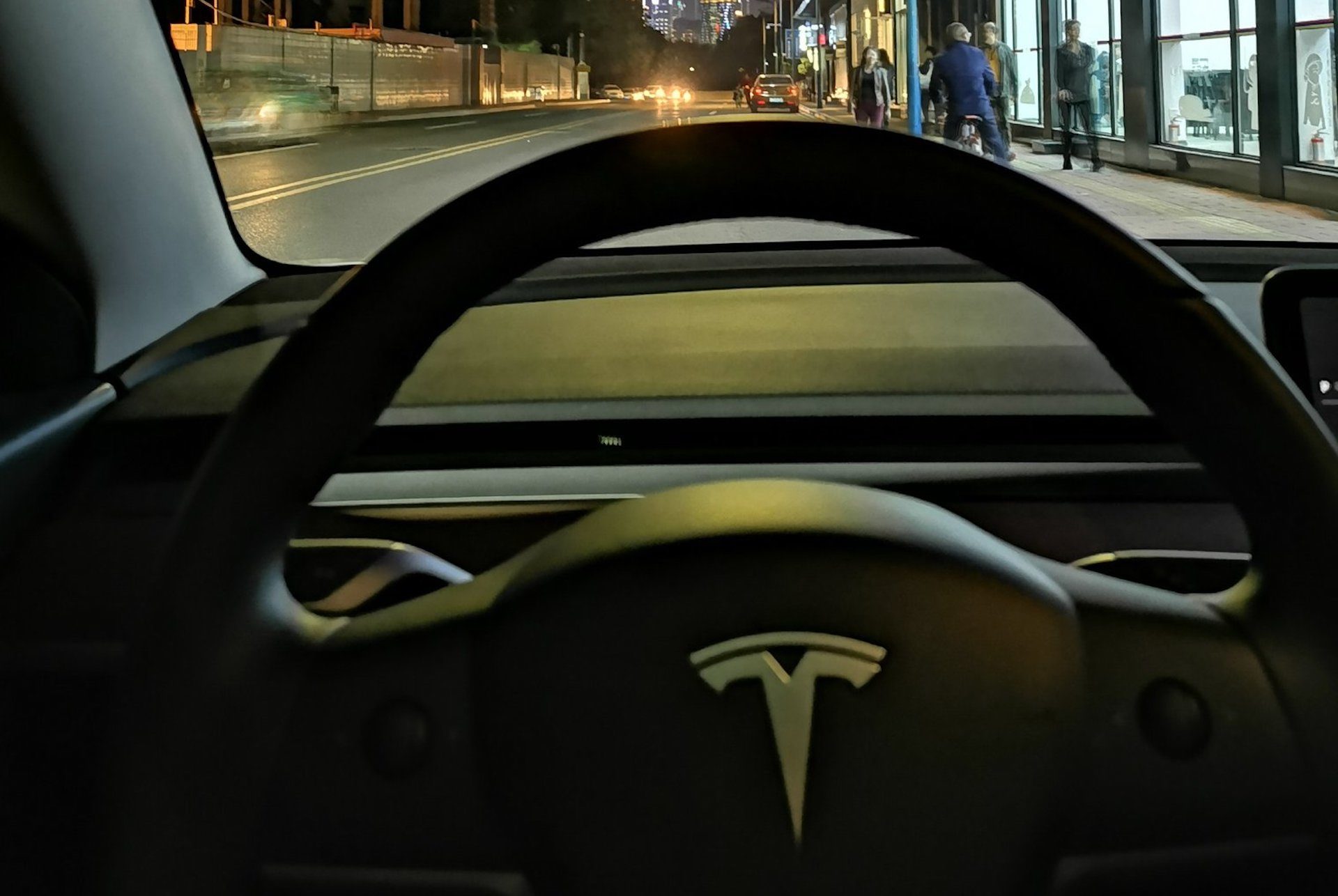
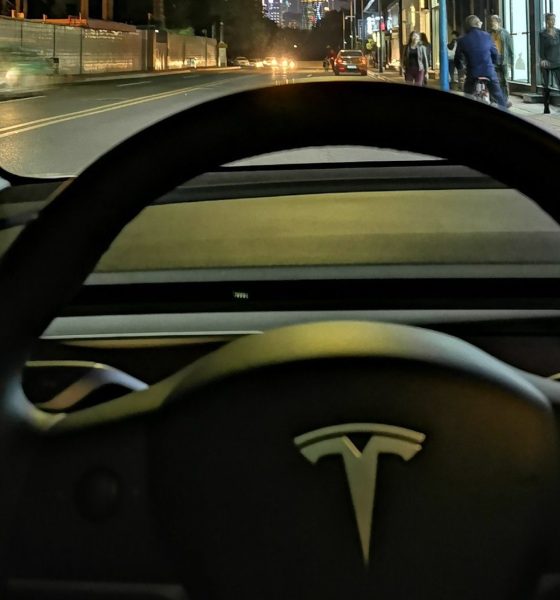
Firmware
Tesla’s free Autopilot offering in China is a strategic move that paves the way for Full Self-Driving
In his Master Plan, Part Deux, Elon Musk described a future populated by Tesla electric cars capable of driving themselves. In his scenario, Musk noted that the vehicles would be able to travel from point to point without human input, forming a network of electric cars that can essentially pay for themselves through ride-sharing. Today, Tesla appears to have taken a step towards this goal, by making Enhanced Autopilot standard for all Model 3 orders in China.
Having the driver-assist suite standard for Model 3 buyers makes sense from a business perspective. As the company looks to maintain consecutive profitable quarters while working to secure its position as a top seller in the world’s largest electric vehicle market, China, Tesla will need to entice buyers with a vehicle that has both an affordable price point and market differentiators that cannot be easily replicated. Autopilot data.
Having Data Will Sell Cars
Beyond the intention of pushing more Model 3 sales in China, Tesla’s standard offering of Enhanced Autopilot in the country bodes well for the company’s development and eventual release of its Full Self-Driving (FSD) suite.
It’s important to note that outside of China, Tesla has collected over 1 billion miles of Autopilot data from its customers, which has allowed the company to maintain a competitive edge over other automakers by creating a vast network of roadway and real-world driving data. This data can be seen as a major pillar for the evolution of Autopilot features. Features such as Navigate on Autopilot, which debuted on the highly-anticipated Software Version 9 last year, was as a notable step towards autonomous driving. Tesla’s AI Director, Andrej Karpathy, noted in last year’s third-quarter earnings call that they were able to train large neural networks and continue to refine the accuracy and precision of Autopilot decisions.
By including Enhanced Autopilot as a standard feature in China, Tesla will be able to traverse this very same tried-and-true path of having its customers build a network of driving data in a new market, but on a much quicker timeframe and larger scale via Model 3. Not only does it pave the way for FSD development, but the immediate value Autopilot provides to Tesla Model 3 buyers, in the form of having a compelling feature that isn’t readily available on competing electric cars, and at no cost, will arguably be one of its major selling points. A selling point now that will also pay dividends later as Enhanced Autopilot matures in the local market and its value spreads by word of mouth from satisfied drivers.
It should be noted that Tesla’s Enhanced Autopilot and Full Self-Driving system are not synonymous, the former corresponding to a set of non-autonomous driver-assist features and the latter referring to a Level 5-capable autonomous suite of features. Tesla has been aiming to roll out the first features of its FSD system, and Elon Musk has progressively gotten more excited about the impending release of autonomous capabilities’ to Tesla’s electric cars. During the fourth quarter earnings call, for example, Musk noted that Tesla has an edge over other companies pursuing self-driving technologies due to its real-world driving data.
“(Autonomy) has the potential to save millions of lives, tens of millions of serious public injuries and give people their time back, so that they don’t have to drive, they can — if you’re on the road, you can spend time doing things that you enjoy instead of being in terrible traffic. So it’s extremely important. We feel confident about our technical strategy, and I think we have an advantage that no one else has, which is, that we have, at this point, somewhere in the order of 300,000 vehicles on the road, with a 360-degree camera sensor suite, radar, ultrasonics, always connected uploads, especially video clips with the customer submission when there is intervention. So effectively, we have a massive, massive training fleet,” Musk said.
Towards Full Autonomy and (More) Safety
One thing that Tesla and Elon Musk has emphasized over the years is that systems like Autopilot and future capabilities like Full Self-Driving are not just put in place for convenience. While such systems make driving easier, both Autopilot and autonomous driving are considered by Tesla as ways to make driving safer. Tesla emphasized this point in the results of its quarterly vehicle safety reports. In Q4 2018 alone, Tesla recorded one accident for every 2.91 million miles driven with Autopilot engaged, despite the season being prone to untoward incidents on the road due to winter. By comparison, the NHTSA’s data points to an automobile crash every 436,000 miles. It should be noted that these figures are true for Autopilot only.
Tesla is currently pushing for the development and rollout of its Full Self-Driving features. The company is working on a custom chip that can help enable autonomous driving capabilities. In the Q3 2018 earnings call, AI Director Andrej Karpathy mentioned that the company had trained large neural networks that work very well on the road, though deployment was not possible yet due to computational restraints. These restraints are expected to be fully addressed once Tesla starts releasing Hardware 3, which is estimated to be rolled out this year. Elon Musk notes that he expects Full Self-Driving to be safe for use towards the end of 2019.

One can argue that the Chinese market could eventually pave the way for FSD’s eventual release. With China perhaps having less stringent rules in place for the use of self-driving vehicles, it’s not out of the question to see Tesla roll out the next-generation of Autopilot in China first. In this scenario, the offering of Enhanced Autopilot as a standard feature to Model 3 buyers overseas can be seen as a hedge by the California-based automaker, in the event US regulatory approvals to release Full-Self Driving comes to a halt.
Once Full Self-Driving is on the roads, it is not difficult to imagine Tesla being able to make a stronger case for its safety benefits to lawmakers and customers. By this time, it would also make sense for Tesla to offer Enhanced Autopilot as standard in its vehicles. In this scenario, Tesla could enable Autopilot’s basic capabilities in all cars such as Traffic-Aware Cruise Control and Autosteer, while charging a premium to access advanced features like a more robust Navigate on Autopilot and actual Full Self-Driving features like Smart Summon. If Tesla does this, the company could still see a notable income stream for its software. At the same time, it could further tout the benefits of Autopilot making its entire fleet of vehicles much safer.
Tesla’s electric cars are already among the safest vehicles on the road. Model 3, for one, received a flawless 5-Star Rating in all categories and subcategories during the NHTSA’s test. With Autopilot as standard across the board, Tesla’s vehicles would become even safer.

Firmware
Tesla mobile app shows signs of upcoming FSD subscriptions
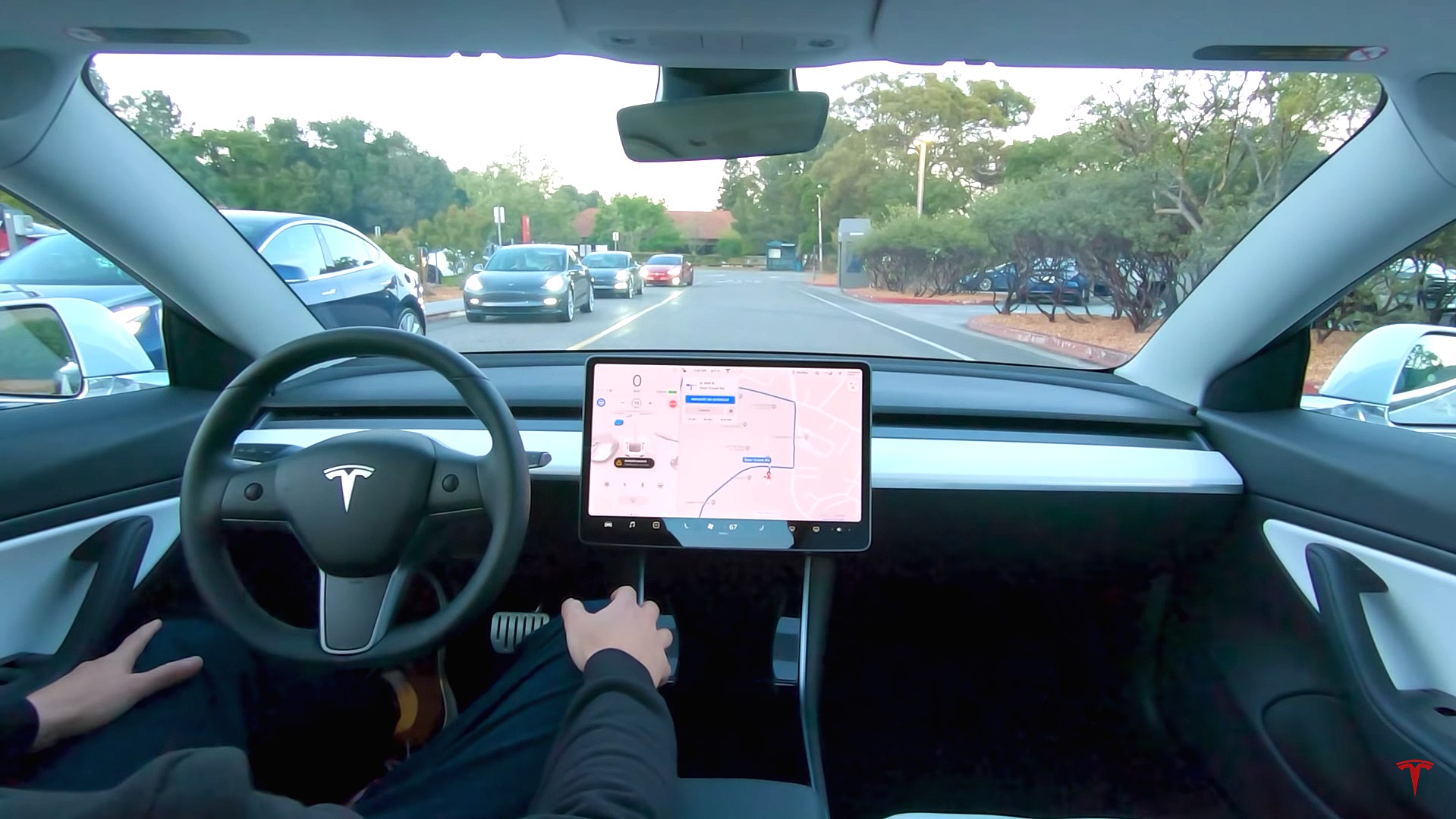
It appears that Tesla may be preparing to roll out some subscription-based services soon. Based on the observations of a Wales-based Model 3 owner who performed some reverse-engineering on the Tesla mobile app, it seems that the electric car maker has added a new “Subscribe” option beside the “Buy” option within the “Upgrades” tab, at least behind the scenes.
A screenshot of the new option was posted in the r/TeslaMotors subreddit, and while the Tesla owner in question, u/Callump01, admitted that the screenshot looks like something that could be easily fabricated, he did submit proof of his reverse-engineering to the community’s moderators. The moderators of the r/TeslaMotors subreddit confirmed the legitimacy of the Model 3 owner’s work, further suggesting that subscription options may indeed be coming to Tesla owners soon.
Did some reverse engineering on the app and Tesla looks to be preparing for subscriptions? from r/teslamotors
Tesla’s Full Self-Driving suite has been heavily speculated to be offered as a subscription option, similar to the company’s Premium Connectivity feature. And back in April, noted Tesla hacker @greentheonly stated that the company’s vehicles already had the source codes for a pay-as-you-go subscription model. The Tesla hacker suggested then that Tesla would likely release such a feature by the end of the year — something that Elon Musk also suggested in the first-quarter earnings call. “I think we will offer Full Self-Driving as a subscription service, but it will be probably towards the end of this year,” Musk stated.
While the signs for an upcoming FSD subscription option seem to be getting more and more prominent as the year approaches its final quarter, the details for such a feature are still quite slim. Pricing for FSD subscriptions, for example, have not been teased by Elon Musk yet, though he has stated on Twitter that purchasing the suite upfront would be more worth it in the long term. References to the feature in the vehicles’ source code, and now in the Tesla mobile app, also listed no references to pricing.
The idea of FSD subscriptions could prove quite popular among electric car owners, especially since it would allow budget-conscious customers to make the most out of the company’s driver-assist and self-driving systems without committing to the features’ full price. The current price of the Full Self-Driving suite is no joke, after all, being listed at $8,000 on top of a vehicle’s cost. By offering subscriptions to features like Navigate on Autopilot with automatic lane changes, owners could gain access to advanced functions only as they are needed.
Elon Musk, for his part, has explained that ultimately, he still believes that purchasing the Full Self-Driving suite outright provides the most value to customers, as it is an investment that would pay off in the future. “I should say, it will still make sense to buy FSD as an option as in our view, buying FSD is an investment in the future. And we are confident that it is an investment that will pay off to the consumer – to the benefit of the consumer.” Musk said.
Firmware
Tesla rolls out speed limit sign recognition and green traffic light alert in new update
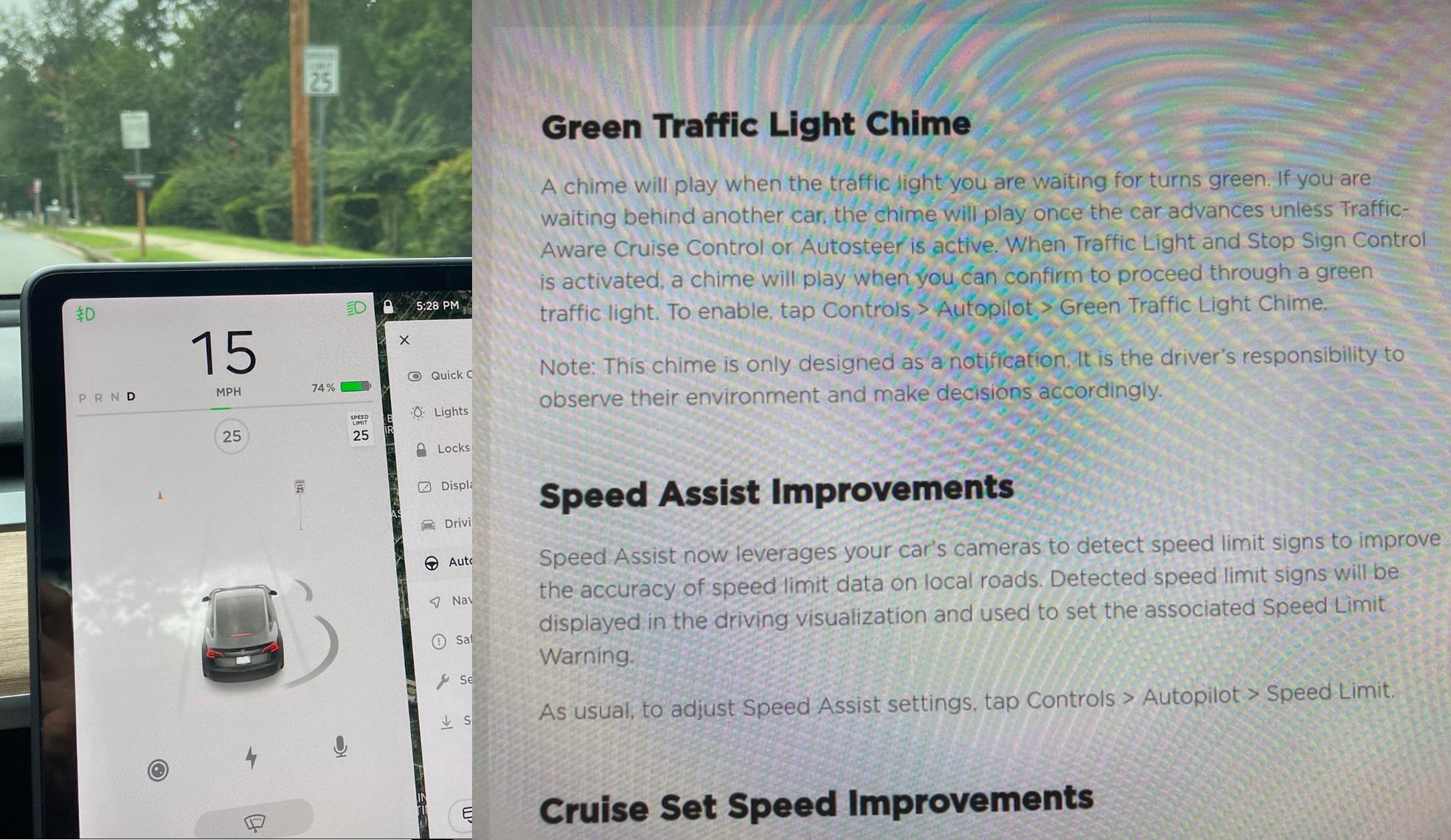
Tesla has started rolling out update 2020.36 this weekend, introducing a couple of notable new features for its vehicles. While there are only a few handful of vehicles that have reportedly received the update so far, 2020.36 makes it evident that the electric car maker has made some strides in its efforts to refine its driver-assist systems for inner-city driving.
Tesla is currently hard at work developing key features for its Full Self-Driving suite, which should allow vehicles to navigate through inner-city streets without driver input. Tesla’s FSD suite is still a work in progress, though the company has released the initial iterations of key features such Traffic Light and Stop Sign Control, which was introduced last April. Similar to the first release of Navigate on Autopilot, however, the capabilities of Traffic Light and Stop Sign Control were pretty basic during their initial rollout.
2020.36 Showing Speed Limit Signs in Visualization from r/teslamotors
With the release of update 2020.36, Tesla has rolled out some improvements that should allow its vehicles to handle traffic lights better. What’s more, the update also includes a particularly useful feature that enables better recognition of speed limit signs, which should make Autopilot’s speed adjustments better during use. Following are the Release Notes for these two new features.
Green Traffic Light Chime
“A chime will play when the traffic light you are waiting for turns green. If you are waiting behind another car, the chime will play once the car advances unless Traffic-Aware Cruise Control or Autosteer is active. When Traffic Light and Stop Sign Control is activated, a chime will play when you can confirm to proceed through a green traffic light. To enable, tap Controls > Autopilot > Green Traffic Light Chime.
“Note: This chime is only designed as a notification. It is the driver’s responsibility to observe their environment and make decisions accordingly.”
Speed Assist Improvements
“Speed Assist now leverages your car’s cameras to detect speed limit signs to improve the accuracy of speed limit data on local roads. Detected speed limit signs will be displayed in the driving visualization and used to set the associated Speed Limit Warning.
“As usual, to adjust Speed Assist settings, tap Controls > Autopilot > Speed Limit.”
Footage of the new green light chime in action via @NASA8500 on Twitter ✈️ from r/teslamotors
Amidst the rollout of 2020.36’s new features, speculations were abounding among Tesla community members that this update may include the first pieces of the company’s highly-anticipated Autopilot rewrite. Inasmuch as the idea is exciting, however, Tesla CEO Elon Musk has stated that this was not the case. While responding to a Tesla owner who asked if the Autopilot rewrite is in “shadow mode” in 2020.36, Musk responded “Not yet.”
Firmware
Tesla rolls out Sirius XM free three-month subscription
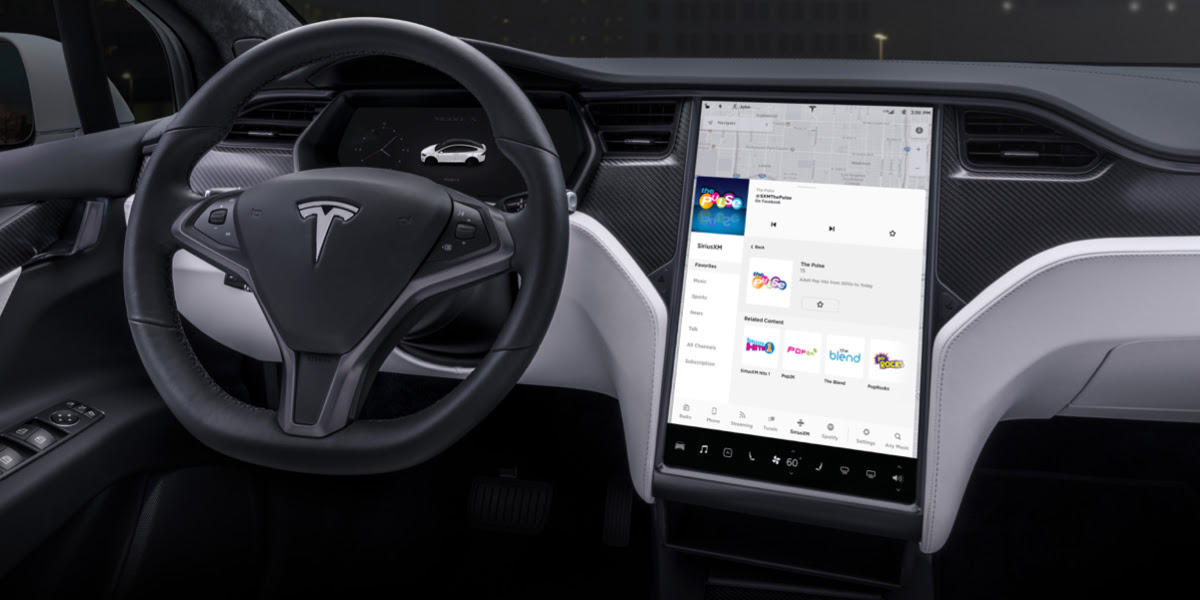
Tesla has rolled out a free three-month trial subscription to Sirius XM, in what appears to be the company’s latest push into making its vehicles’ entertainment systems more feature-rich. The new Sirius XM offer will likely be appreciated by owners of the company’s vehicles, especially considering that the service is among the most popular satellite radios in the country today.
Tesla announced its new offer in an email sent on Monday. An image that accompanied the communication also teased Tesla’s updated and optimized Sirius XM UI for its vehicles. Following is the email’s text.
“Beginning now, enjoy a free, All Access three-month trial subscription to Sirius XM, plus a completely new look and improved functionality. Our latest over-the-air software update includes significant improvements to overall Sirius XM navigation, organization, and search features, including access to more than 150 satellite channels.
“To access simply tap the Sirius XM app from the ‘Music’ section of your in-car center touchscreen—or enjoy your subscription online, on your phone, or at home on connected devices. If you can’t hear SiriusXM channels in your car, select the Sirius XM ‘Subscription’ tab for instruction on how to refresh your audio.”
Tesla has actually been working on Sirius XM improvements for some time now. Back in June, for example, Tesla rolled out its 2020.24.6.4 update, and it included some optimizations to its Model S and Model X’s Sirius XM interface. As noted by noted Tesla owner and hacker @greentheonly, the source code of this update revealed that the Sirius XM optimizations were also intended to be released to other areas such as Canada.
Interestingly enough, Sirius XM is a popular feature that has been exclusive to the Model S and X. Tesla’s most popular vehicle to date, the Model 3, is yet to receive the feature. One could only hope that Sirius XM integration to the Model 3 may eventually be included in the future. Such an update would most definitely be appreciated by the EV community, especially since some Model 3 owners have resorted to using their smartphones or third-party solutions to gain access to the satellite radio service.
The fact that Tesla seems to be pushing Sirius XM rather assertively to its customers seems to suggest that the company may be poised to roll out more entertainment-based apps in the coming months. Apps such as Sirius XM, Spotify, Netflix, and YouTube, may seem quite minor when compared to key functions like Autopilot, after all, but they do help round out the ownership experience of Tesla owners. In a way, Sirius XM does make sense for Tesla’s next-generation of vehicles, especially the Cybertruck and the Semi, both of which would likely be driven in areas that lack LTE connectivity.








